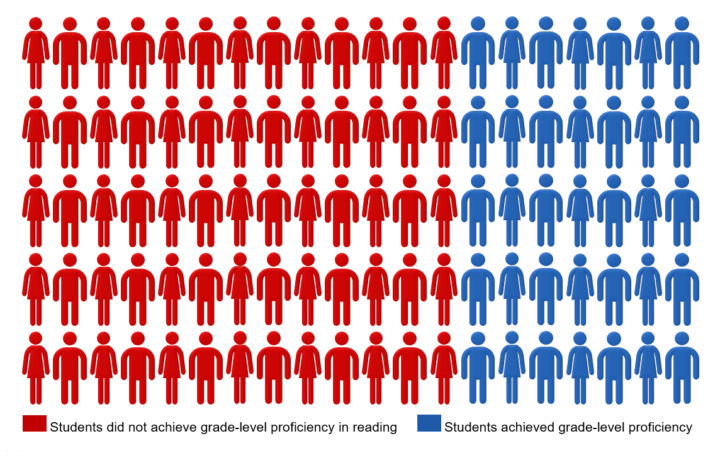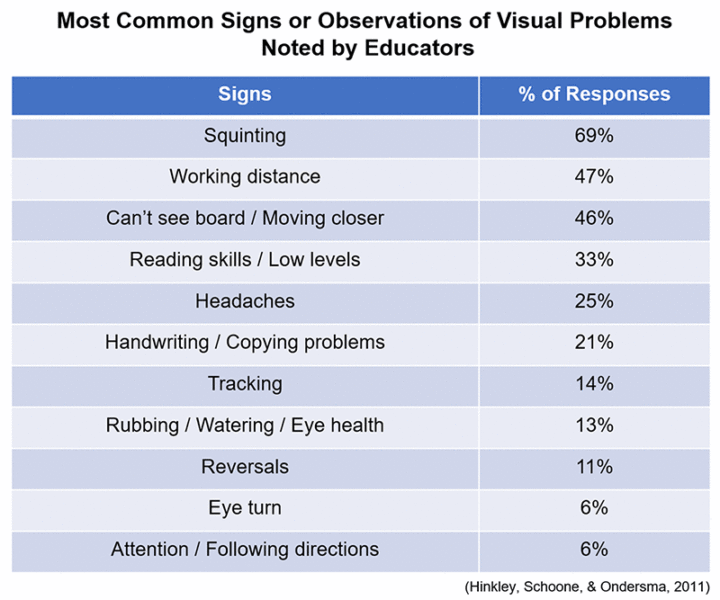Preventing vision-related learning problems. Helping more students experience success.

Why are so many students not proficient in reading?
Nearly two-thirds of our students are unable to demonstrate proficient levels in reading by grade 4, and by grade 12 this situation has not improved (National Center for Education Statistics, 2019). Among students eligible for the free/reduced-price lunch program, the results are even more alarming. Nearly 80% of these students were unable to achieve the NAEP standard for reading proficiency.
Why are so many struggling?
What are we overlooking?
Could it be vision?
Reading is a highly visual process
Vision is the most dominant of the five senses and plays a crucial role in a child’s educational development.
Three levels of vision are critical to an effective reading process.

What do educators say?
Based on an online survey of educators, 100% of the participants recognized that a student’s vision can impact their academic achievement (Hinkley, Schoone, & Ondersma, 2011).
While 95% of the participants noted that their schools had a vision screening program in place, only 65% of them were satisfied with the current system.
75% of the educators noted some or great interest in courses related to students’ vision and learning.




